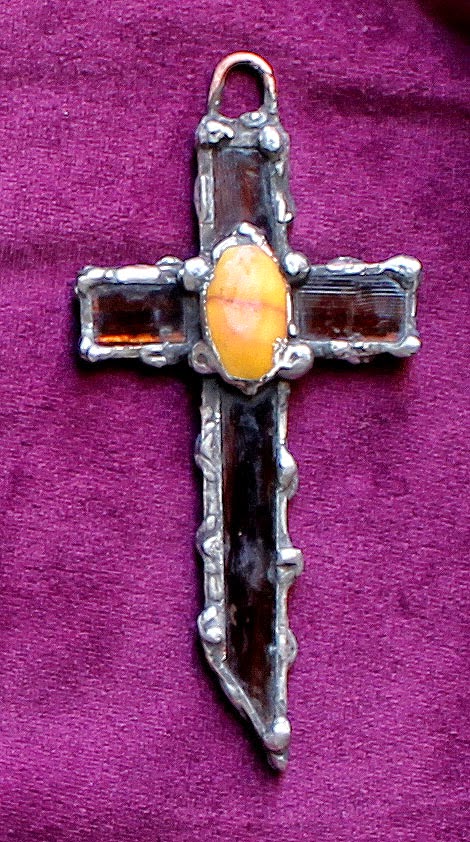Romanesaque Cross
Romanesque Cross
I'm still in that medieval frame of mind! Of all the art
during the middle ages, Romanesque ("Roman-like) art is my favorite. This
piece was made from stained glass and solder. I use the solder as a decorative
element, creating beads in a pattern. I add a patina to each piece to give it
that aged look and to show off all the solder work. There is an agate stone in
the center of this piece with an interesting vein going through it. The bail is
copper wire and it too, has been treated with a patina. You can find this work
on ebay by clicking on the link or pasting the URL in your browser.
The Romanesque time refers to the European 11th and 12th
century. Many of the groups that raided the small villages and towns during the
"Dark Ages" were permanently banished. Europe was growing and stabilizing
once again. The church regained its power over the territories and everyone was
referencing the ancient Roman Empire. Metalsmithing was one of the first art
forms to regain the old art skills and status. There was logic behind these art
forms becoming popular; jewelry is functional and therefore serves more than
one purpose. Jewelry is also portable. Even a Viking raider could wear
fashionable jewelry while fighting and then later trade it for a more
prestigious piece. In fact, when there was a shortage of currency, jewelry
becomes an excellent trade item, even doubling in value when metals become
scarce. We still use jewelry in this manner today. It's one of the best ways to
invest in gold or silver since the value increases in an unstable market.
The religious icons were functional art as well. You had
images of the saints in jewelry and small figurines. The art becomes didactic,
which means to teach through images. Since 90 percent of the common people were
illiterate and the church needed to 'educate' everyone about the bible, art
became a major memory device. Like flash cards, a priest or missionary could
point to a work of art whether it was a small figurine or carved masonry on a
cathedral wall, and explain the religious significance behind it.



0 Comments:
Post a Comment
Subscribe to Post Comments [Atom]
<< Home